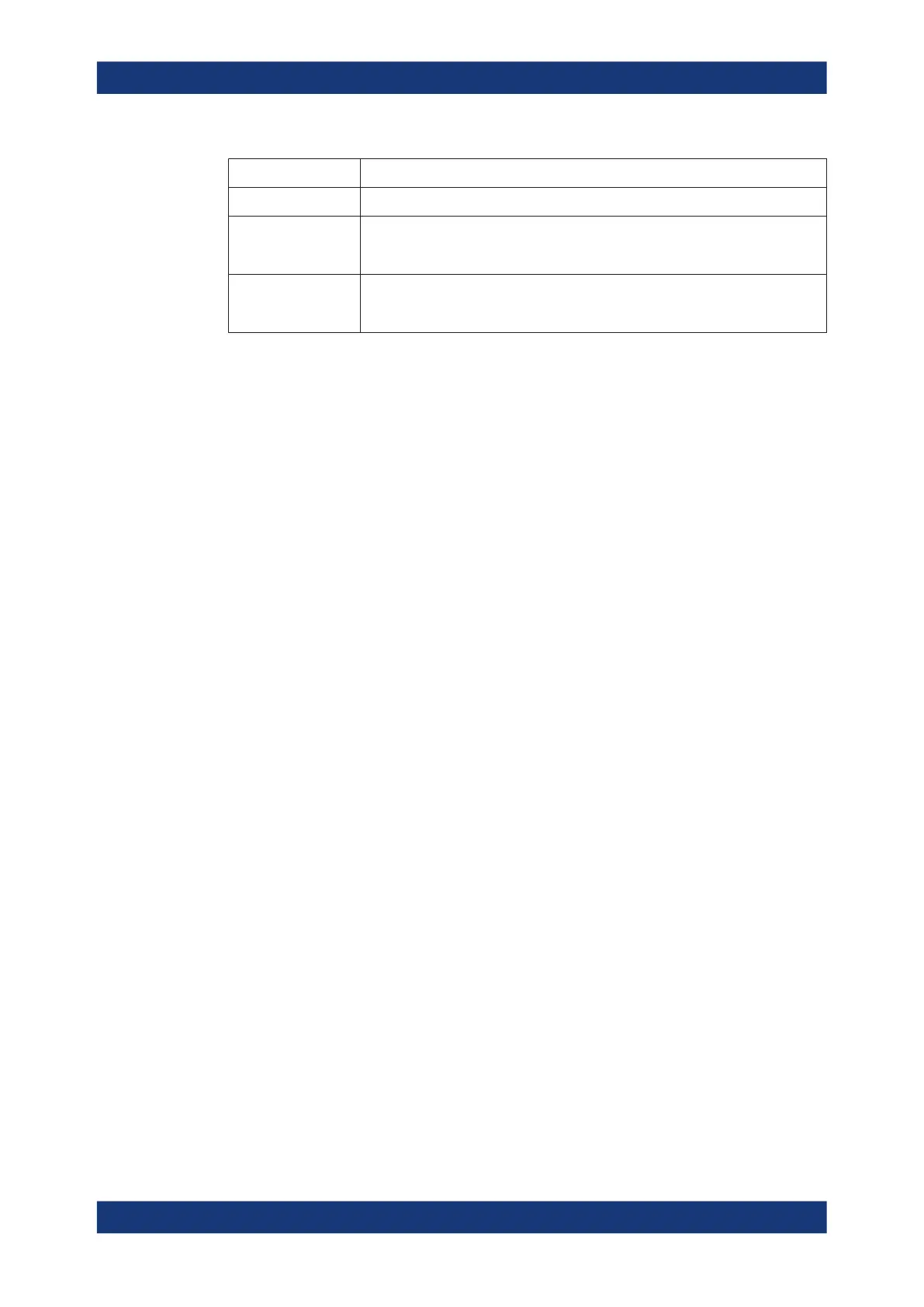Remote control commands
R&S
®
RTP
1148User Manual 1337.9952.02 ─ 12
Event Description
NOACtion The action is not initiated.
SUCCess
The action is initiated if the operation finished successfully:
●
Limits or margins were not exceeded during the entire measurement
●
Mask test passed
VIOLation
The action is initiated if the operation finished with error:
●
Limits or margins were violated during the measurement
●
Mask test failed
22.4.6 Bit pattern parameter
Bit pattern parameter are required with commands triggering on address, identifier, or
data pattern.
To set the pattern value, you can use either a numeric parameter as defined in the
SCPI standard, or a string parameter.
Bit pattern in numeric parameter
In a numeric parameter, the values are listed byte-by-byte, with bytes separated by
commas and MSB first. The default numeral format is decimal, other formats can be
indicated by a format identifier (#B = binary, #H = hexadecimal, #Q = octal). Currently,
no format for signed values is available.
Example: Parameter with three bytes, decimal byte values are 10, 20, 30. The exam-
ples are given for CAN, the bit pattern in other commands is defined in the same way.
●
TRIGger:CAN:DMIN 10,20,30
●
TRIGger:CAN:DMIN #B00001010,#B00010100,#B00011110
●
TRIGger:CAN:DMIN #H0A,#H14,#H1E
●
TRIGger:CAN:DMIN #Q012,#Q024,#Q036
Bit pattern in string parameter
In a string, the complete binary pattern is written without separation of bytes, for exam-
ple:
TRIGger:CAN:DMIN '000010100001010000011110'
Unlike a numeric parameter, the string parameter accepts wildcards for single bits (X =
don't care). Whether wildcards can be used or not depends on the remote command.
Usually, address and identifier parameter require unique patterns while data parame-
ters may contain wildcards.
Mostly the length of the bit pattern is defined, for example, by the I²C address type, the
CAN identifier type, or the data length code. In theses cases, it is recommended that
you enter the complete bit pattern. If you enter a shorter pattern, the instrument fills up
the pattern with X bits to the right of the defined pattern.
Example: You want to trigger on an 11 bit CAN address and enter the bit pattern
'11100011' (8 bits only). The instrument uses the pattern '11100011XXX' for triggering.
Frequently used parameters and suffixes

